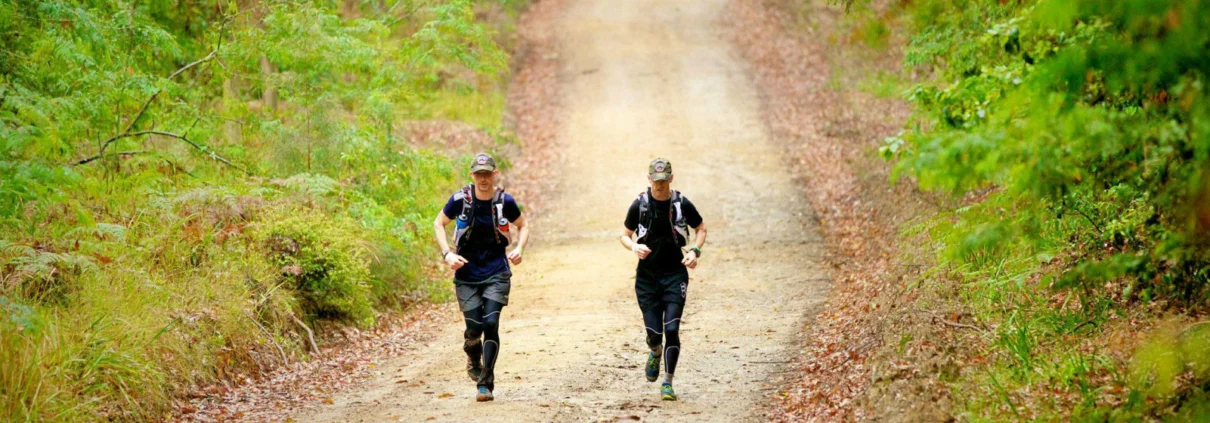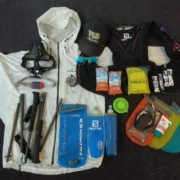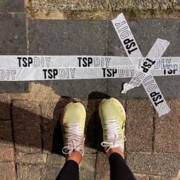How to tackle your first Ultra Marathon
Pace. Gear. Nutrition.
Three causes of the most common mistakes made by aspiring endurance runners when embarking on their first ultra-marathon.
We outline how to get maximum enjoyment out of your first journey down “the long trail”.
Never try anything new on race day
If you haven’t used it and tested it during your training, leave it at home on race day. That includes clothing, footwear, gear (i.e. head torches) and nutrition.
Your shoes play a pivotal role
Planning on wearing those fancy new pair of shoes for the first time on the day of your race? Don’t. New shoes can easily give you blisters and various other lower leg pains. This can easily ruin all the hard work you’ve put in to get to the start line.
That goes for clothing, gear and nutrition too
If you haven’t used it and tested it in anger during your training, leave it at home. Avoid the temptation to sport that wonderful event t-shirt you scored in the goodie bag. Even the smallest inefficiencies in gear become amplified tenfold in an ultra-marathon. Many times we fail to use race-day gear in training. Small things, both mental and physical like chafing and unwarranted fatigue, become huge setbacks and will quickly ruin your chances of a successful ultra-marathon campaign.
Carry ALL the mandatory gear and make sure it’s good quality
It’s worth the investment and not just because it will be checked. It’s there for a reason.
During a recent ultra-marathon event, we needed to use every single piece of mandatory gear. Bad weather had closed in and with a sub-zero wind-chill factor the temperature plummetted; many competitors were caught out and ended up being treated for hypothermia as they were under-prepared. If you’re going to buy one expensive piece, consider having a good outer-most layer that keeps you warm and dry.
A quality waterproof jacket, like Kathmandu’s Zeolite v2, can mean the difference between an awesome day out or one you’d much rather forget.
Practice packing and unpacking your pack
Ideally, train with a full pack with all mandatory gear and individually bag your items in waterproof bags. Use sealable bags like Sea to Summit Ultra-Sil bags or for a cheaper option GLAD Snap Lock Bags. They need to be sealable so you can squeeze the air out of them and keep the contents dry. Bagging them individually helps with packing but also means you can access things quickly.
Label or colour code your gear. This will help you to find what you’re looking for when your brain is no longer working properly.
What about those items you’re least like to use… Most ultra-marathon events now require you to carry your lights and hi-vis vest with you from the start. Pack these at the bottom of your pack as you won’t need them until later in the event. There’s nothing wrong with packing a lighter headlamp for the day. If you have a bigger, chunkier headlamp that will be your main one at night, you can collect this during the race.
Use gaiters
You don’t need to spend $100 on them. Cloth gaiters are available if you want to be fancy otherwise mowing gaiters from Bunnings do the job just as well for a fraction of the price. You want to prevent rocks and dirt getting in your shoes. As the saying goes “It isn’t the mountains ahead to climb that wear you out; it’s the pebble in your shoe.”
Don’t wait for chafe, lube up early!
As the saying goes, “Prevention is better than a cure”. Lots of products available including powders for socks that help dry feet out as well as prevent friction with product such as Body Glide, Lanacane or 3B Neat for those areas where chafing between skin surfaces and fabric is likely to occur; between the buttocks, between the legs and beneath the breasts and for the gents, nipples. Also remember the shoulders where your pack may rub and the lower area of your back where older packs can rub; the newer, more modern vests like Salomon Skin and Ultimate Direction shouldn’t do this. Don’t wait for chafe, lube up early!
Use layers to manage your temperature
Most ultra-marathons start in the early hours. Use gloves early and at night when it’s getting cold. But also be careful of overheating, particularly at the start of your race – it may be cold early in the morning but unlikely to be cold enough to need your thermals on. You will heat up quickly.
With an event like Ultra Trail Australia the start can be congested for quite a while once you hit the single track, because of the number of runners in this event; it gets difficult to stop and disrobe out of your warm gear, and you’ll lose quite a few places if you need to do that in the early stages. If it’s cold, go with your waterproof jacket, buff and gloves as these can be packed away quickly and easily without the need to stop.
Wear headwear that you can adjust
A buff or neck tube is perfect as you can use it to trap heat when you’re cold or let heat out when you’re warm. You can also use it around your wrist like a sweat band to mop sweat and wipe your nose!
Mental strategies are key
Pack a change of shirt and socks for the mid-point… sure. However if everything is feeling great, socks and shoes aren’t rubbing, then consider not changing unless you absolutely need to and saving them for much later in the event. There is not much better feeling out there than a fresh pair of socks after 8 hours or so of wearing the same pair through mud, water and bush.
Nutrition
Hydrate!
Don’t just wing it on race day. Being properly hydrated in the days leading up to the race and not just downing that bottle of electrolytes at the start line is the key! At a minimum, you should aim to consume at least two to two and a half litres of water every day to ensure your body is functioning at its peak.
Before your first ultra-marathon
Ideally, you should have tested this as part of your long-distance training sessions to find what works best for you but decide in advance what you plan to eat before your event. As the golden rule states “Don’t try anything new on Race Day”.
During your first ultra-marathon
This is a very individual thing but whatever works for you, do it regularly and frequently throughout the race. You’ll begin the day feeling good and running strong, you’ll be churning through those energy stores, so avoid not beginning early enough. At the first signs of a sour stomach and we tend to shy away from eating. This is the last thing you want to do. You can’t run when you aren’t fueling and hydrating.
Check out our Evolve Endurance Nutrition Program for guidance on how to fuel effectively during your race as well as during your training and recovery,
Pace yourself!
Start slow and keep it steady
Avoid getting caught up in the excitement and going out too hard, remember you have a journey ahead of you so try starting at a steady pace.
Stay relaxed and positive
Think back to the hard work you’ve put in to get there – all you have to do is keep putting one foot in front of the other until you cross that finish line. Listening to music helps some to refocus when things get a little tough for others, having someone to share those dark patches with is a better way to keep their spirits up so if you fall into stride with someone, ask how they’re travelling!
Have fun!
Take a look around and enjoy the atmosphere.
Remember that you signed up for this whole crazy thing in the first place. You’re going to push yourself a little harder on race day, but it’s not supposed to be torture! You’ve put in all the hard work getting to the start line, now’s the time to enjoy the rewards that come with your first ultra-marathon!
 © V&B Athletic
© V&B Athletic © Pace Athletic
© Pace Athletic © V&B Athletic
© V&B Athletic







